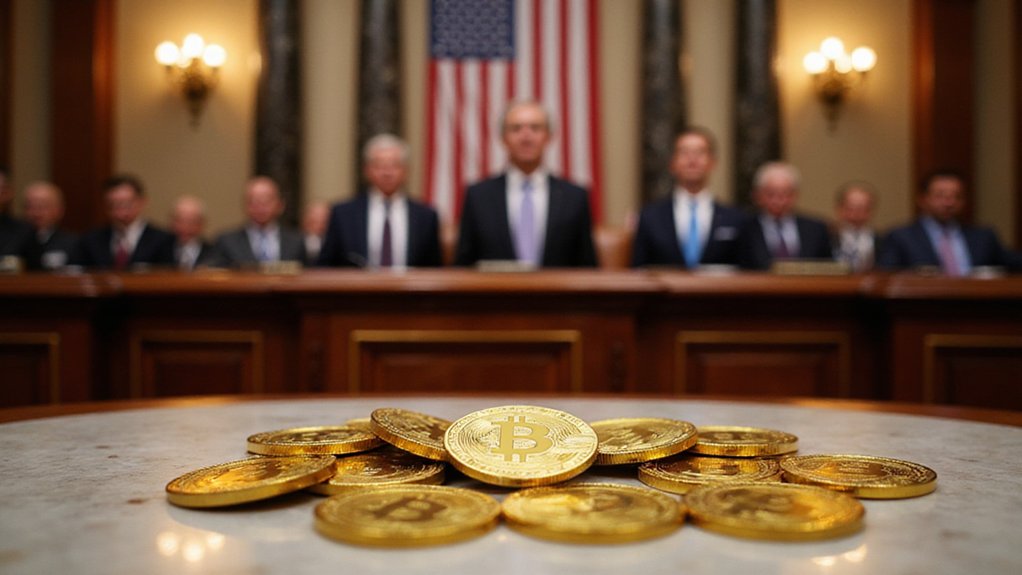The cryptocurrency industry, which spent the better part of a decade maneuvering through regulatory limbo while dodging enforcement actions and congressional hearings that resembled medieval inquisitions, has found itself with an unlikely champion in Donald Trump—a man who once dismissed Bitcoin as a “scam” but now promises to transform America into the “crypto capital of the world.”
On July 18, 2025, Trump signed the GENIUS Act into law, establishing the first extensive federal framework for stablecoins and marking what supporters herald as the dawn of mainstream digital asset adoption (though skeptics might wonder if the acronym’s grandiosity masks the usual Washington tendency to overcomplicate simple concepts).
Washington’s love affair with grandiose acronyms continues, this time promising crypto clarity while delivering the usual regulatory complexity.
The legislative package, which includes the complementary Clarity Act for digital commodities and the rather bluntly named Anti-CBDC Surveillance State Act, represents Trump’s ambitious pivot from crypto skeptic to digital asset evangelist.
His administration’s early executive orders established both a Strategic Bitcoin Reserve and U.S. Digital Asset Stockpile, moves that would have seemed fantastical during his previous presidency when regulatory agencies treated cryptocurrency exchanges like unlicensed casinos.
The framework grants banks authority to issue crypto assets backed “one-for-one” with U.S. dollars and Treasury bills—essentially blessing what DeFi protocols have been doing for years, albeit with considerably more paperwork. The legislation extends this authority to nonbanks and credit unions, expanding the pool of institutions that can participate in the emerging stablecoin ecosystem.
The President’s Working Group on Digital Asset Markets, comprising Treasury, Commerce, and DOJ officials, produced a thorough 160-page report outlining regulatory pathways that attempt to balance innovation incentives with risk management. Industry participants can utilize search functionality to navigate the complex regulatory documentation when seeking specific compliance requirements.
Yet for all its ambitious scope, the framework reveals a curious blind spot.
While meticulously addressing stablecoin mechanics and expanding CFTC authority over spot markets for non-security digital assets, the legislation largely sidesteps the thorny question of how existing securities laws apply to the thousands of tokens already circulating in secondary markets. Meanwhile, European regulators continue advancing their own comprehensive approach, with MiCA regulations now requiring extensive licensing and compliance mechanisms for crypto asset service providers across EU member states.
This oversight leaves a substantial gray area where market participants must still navigate the same regulatory uncertainty that plagued the industry for years—suggesting that even Trump’s crypto revolution cannot entirely escape Washington’s penchant for solving yesterday’s problems while creating tomorrow’s headaches.









